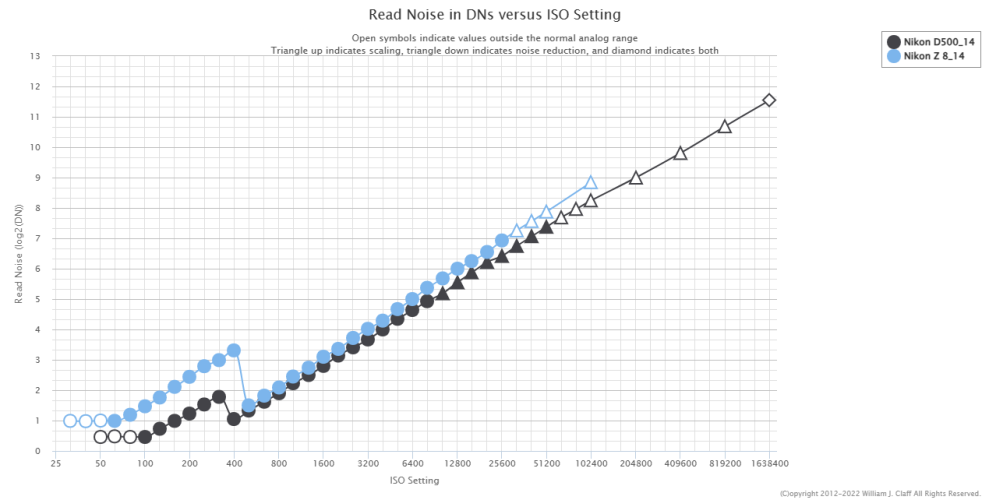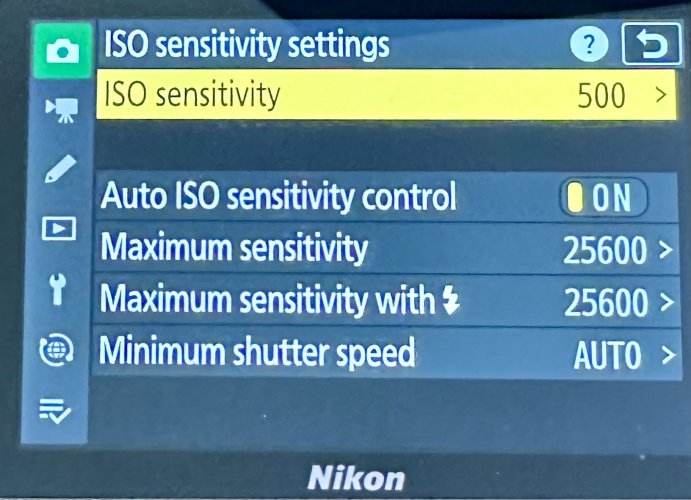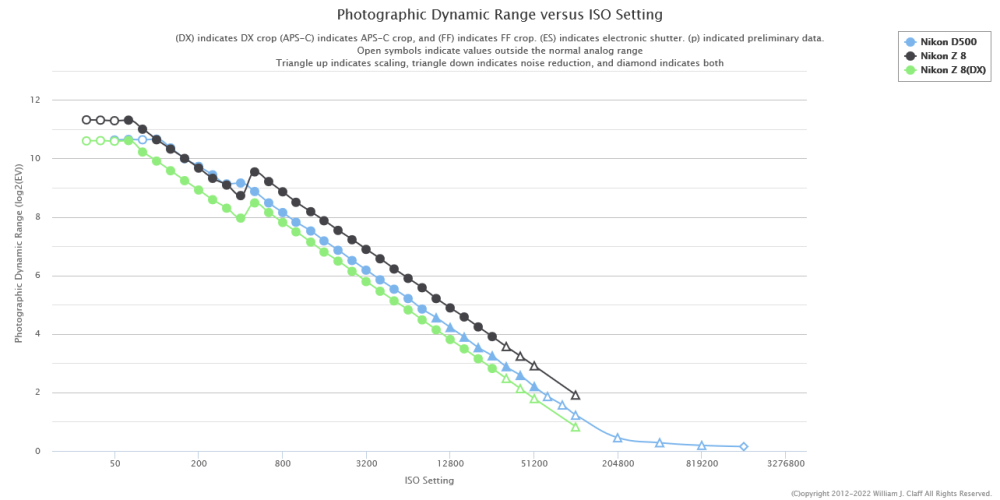CameraLex
New member
I noticed that the Z8 is noisier than my old D500 at ISO 400.
When I looked up how the noise performance of the Z8 is against the D500 (see attached chart which confirms high level of noise at low ISO) I came aware of the dual gain sensor behavior.
Looking at the chart I am now convinced I do not want to shoot with ISO lower than 500 on my Z8.
Because I shoot Manual auto ISO I want auto ISO to start at ISO 500 and go up.
I can setup the Maximum AUTO ISO but I can't figure a way out to set the base to ISO 500.
Any idea's?
Thanx in advance
Lex
-I've searched the forum group but came up ampty handed...-
When I looked up how the noise performance of the Z8 is against the D500 (see attached chart which confirms high level of noise at low ISO) I came aware of the dual gain sensor behavior.
Looking at the chart I am now convinced I do not want to shoot with ISO lower than 500 on my Z8.
Because I shoot Manual auto ISO I want auto ISO to start at ISO 500 and go up.
I can setup the Maximum AUTO ISO but I can't figure a way out to set the base to ISO 500.
Any idea's?
Thanx in advance
Lex
-I've searched the forum group but came up ampty handed...-




